Articles of 2005
Fifteen Rounds Reexamined
The blogs were clogged following the Bernard Hopkins-Jermain Taylor fight July 16th. The debates raged as to the scoring of round 12, the inactivity of Hopkins in the first half (and more) of the fight, or how Taylor faded down the stretch.
But one question raised in the debates was particularly intriguing: What would have happened had the bout been for 15 rounds instead of 12?
Many used the argument that Hopkins was getting stronger, while Taylor was losing steam as the bell rang for the close of the 12th and final round.
Of course we will never know about rounds 13, 14, and 15 with the names Hopkins and Taylor attached.
Once a fixture of world championship fights, 15-rounders were the great separator between the champions and the masses wanting to be champions. To compete well over the 15 round route meant dedication in training and a strong will. It was an unforgiving distance for those either ill-equipped or unprepared.
Why were title fights hastily changed in the early 1980s to 12 rounds?
We have to look back to the age of live fights on network television to see why championship fights moved from the more demanding distance.
It started as a quick fix response to the death of Korean lightweight Deuk-Koo Kim following his 14th round knockout loss to then-WBA champion Ray “Boom Boom” Mancini on November 13, 1982 in a fight telecast nationally.
The bout was a vicious struggle. The resolute Mancini had in front of him an equally tough, but limited, foe in Deuk-Koo Kim.
Neither of the two fighters were noted for exceptional firepower; indeed Kim was largely unknown outside his home country of Korea.
Mancini had built a reputation for toughness, stamina, and the ability to throw a high volume of punches.
As the fight progressed, Mancini established a clear lead. In fact, a review of the scorecards indicated that he had built an insurmountable tally going into the 14th round.
Despite this, Mancini had his hands full. Kim pressed and answered back often. The fans at Las Vegas’ Caesars Palace were repeatedly on their feet as the two men fought in the trenches. Neither fighter gave an inch.
In the 14th, Kim was dazed by a Mancini barrage and sagged to the canvas. Mancini and the crowd were ecstatic. Kim, however, never fully regained consciousness.
Four days after the bout, Kim died of injuries sustained in the bout.
In an endeavor to appear proactive, the WBC (not the organization sanctioning this bout) almost immediately issued a statement saying that WBC world title bouts would be set for 12 rounds.
In the heavyweight division, for example, the first 12 round title bout under the new rules was the Larry Holmes-Lucien Rodriguez match for the WBC title on March 27, 1983.
It marked the first time since Gene Tunney had successfully defended his title against former champion Jack Dempsey in a 10-rounder, Sept. 22, 1927, that a heavyweight title fight was scheduled for less than 15 rounds.
Tunney’s final defense of his title before retiring, an 11th round knockout of Tom Heeney, July 26, 1928, was scheduled for 15 rounds.
In fact, all heavyweight title matches with the exception of the scheduled 20-rounder between Joe Louis and Abe Simon match on March 21, 1941, which ended in a 13th round knockout win for Louis, were scheduled for 15 until the Holmes-Rodriguez bout.
And, not incidentally, no champion or challenger had ever died as the result of injuries received in a heavyweight world title fight.
The WBA and IBF maintained 15 round title bouts for short period, but, feeling pressure from a variety of sources, ultimately switched to 12-rounders as well.
Previously, 12 round bouts were normally for titles such as the NABF and various other less-than-world championship belts.
Perhaps the most famous non-12 or 15 round heavyweight title bouts were the two matches between Jack Dempsey and Gene Tunney. Both matches were scheduled 10-rounders.
Prior to Jack Dempsey’s reign, bouts went for a variety of distances. Jack Johnson, for example, lost his championship in the 26th round of a scheduled 45 rounds against Jess Willard.
Johnson also defended his title in scheduled 10 and 20 round bouts.
So what was the magic in settling on a 15-rounder as the championship distance? The answer lies in the viewing of the Johnson-Willard fight, and the Tunney-Dempsey fights.
It is clear that two well-conditioned and experienced fighters can compete at a high level for 15 rounds’ witness great struggles like Marciano-Walcott I, Ali-Frazier I and Holmes-Norton. (And, if the heavyweights can do it, then the lighter weight fighters can as well).
Fights past 15 rounds were essentially fights to the finish. Fighters and trainers strategized accordingly. There was more mauling, fewer combinations, and a lot more standing around in the hopes the opponent would make a mistake.
Shorter title fights, such as the Tunney-Dempsey series, though designed to help the aging champion see the final bell, ended unsatisfactorily.
Although Tunney-Dempsey II will always be remembered as the “Long Count” bout, the 10 round limit allowed Dempsey to finish on his feet (and for those who forget, he was dropped and nearly out of it in the final round). Tunney, as it turned out, was the actual beneficiary because he was able to move quickly for the entire fight.
No medical or other scientific reporting was conducted or sought before the change from 15 to 12 rounds. It was simply decreed that the 12 round distance was somehow safer – and indeed the network TV crisis created by the death passed. Network coverage resumed.
To this day, searches for literature that demonstrates a marked improvement in the safety of fighters at the 12 round championship level reveal zilch.
What did the change really accomplish? No one can say for sure.
I suggest that the shorter distance has quite possibly been in part responsible for older fighters giving it one more go and a greater number of bad decisions (i.e. decisions that would have been rendered meaningless by a stoppage).
Extraordinary champions of the era preceding the change in the title distance, with some notable exceptions, had one thing in common – exceptional stamina. They separated themselves from the rest of the field.
Which brings us back to Hopkins and Taylor. For numerous reasons, no one can reasonably conclude what the result would have been had their bout been a 15 round affair.
First, Hopkins, though the most experienced champion of his era, having engaged in 24 world title bouts, has never fought a 15 round bout. That’s no knock on him; it is simply the state-of-the-art. Of course Taylor has not been past 12 rounds either.
The point is, we have no historical reference for judging either man over the 15 round distance. But most would, I think, tend to believe that Hopkins would have fared well in the old 15 round world. Indeed, just look at him between rounds in a fight and it almost appears that he never even takes a deep breath.
More importantly, however, it is reasonable to conclude that both fighters would have fought differently in a longer fight. It simply cannot be known how each of the fighters would have engaged early or late in a fight with the knowledge that the bout was for 15 long rounds. Their strategies could have resulted in a wildly different result.
Although it is difficult to know how it would have changed the Hopkins-Taylor outcome, it is clear that great champions and contenders alike would have a greater chance to prove their mettle over the longer distance. They would also distinguish themselves from the titlists that populate the alphabets today.
Boxing champions stand out as being among the best-conditioned and fiercest athletes in the world. The 15 round limit – never proven less safe than any other limit – proved itself a significant test for many decades. Now is the time for its return.
-
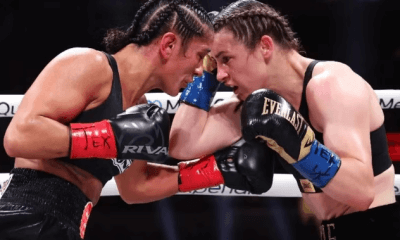
 Featured Articles3 weeks ago
Featured Articles3 weeks agoResults and Recaps from New York Where Taylor Edged Serrano Once Again
-

 Featured Articles3 days ago
Featured Articles3 days agoThe Hauser Report: Zayas-Garcia, Pacquiao, Usyk, and the NYSAC
-

 Featured Articles3 weeks ago
Featured Articles3 weeks agoResults and Recaps from NYC where Hamzah Sheeraz was Spectacular
-

 Featured Articles3 weeks ago
Featured Articles3 weeks agoFrom a Sympathetic Figure to a Pariah: The Travails of Julio Cesar Chavez Jr
-
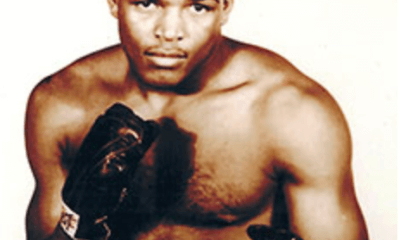
 Featured Articles3 weeks ago
Featured Articles3 weeks agoPhiladelphia Welterweight Gil Turner, a Phenom, Now Rests in an Unmarked Grave
-
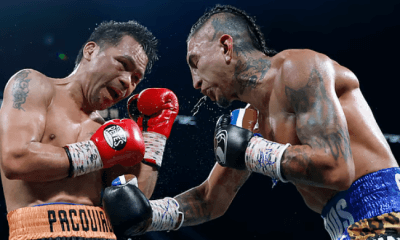
 Featured Articles2 weeks ago
Featured Articles2 weeks agoManny Pacquiao and Mario Barrios Fight to a Draw; Fundora stops Tim Tszyu
-
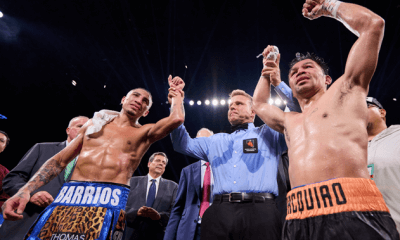
 Featured Articles1 week ago
Featured Articles1 week agoArne’s Almanac: Pacquiao-Barrios Redux
-
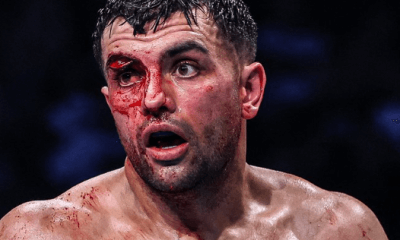
 Featured Articles4 weeks ago
Featured Articles4 weeks agoCatterall vs Eubank Ends Prematurely; Catterall Wins a Technical Decision














